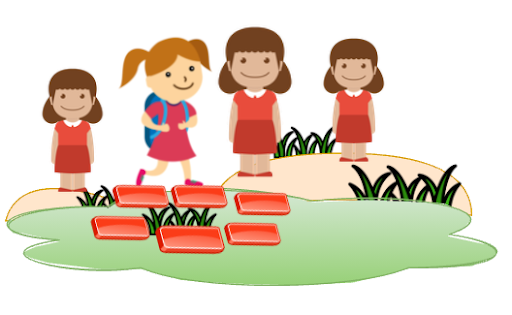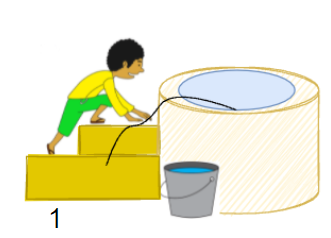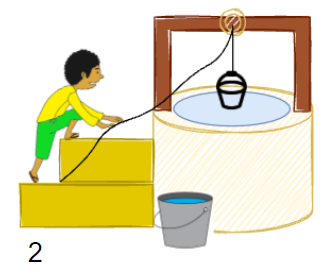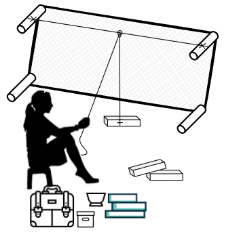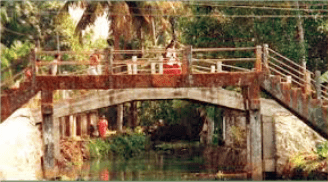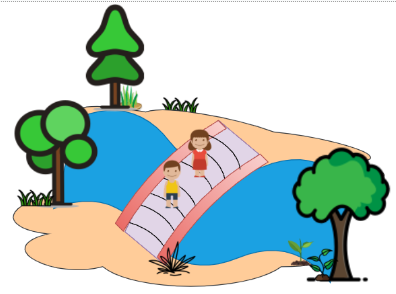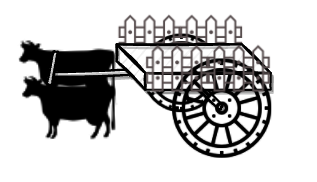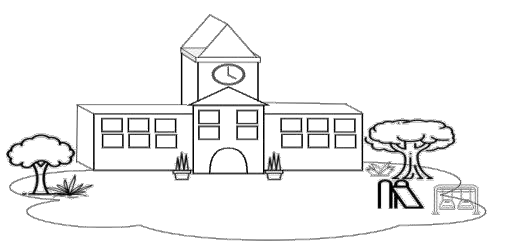Class 4 Evs Chapter 1 Questions and Answers - Free PDF Download
FAQs on NCERT Solutions For Class 4 Evs Chapter 1 Going To School - 2025-26
1. What are the key topics covered in NCERT Solutions for Class 4 EVS Chapter 1 Going To School as per CBSE 2025–26?
NCERT Solutions for Class 4 EVS Chapter 1 cover important modes of transportation to school such as bamboo and cement bridges, trolleys, boats, camel-carts, bullock-carts, and bicycles. The chapter also discusses the importance of safe travel, materials used to make bridges, and practical experiences related to various routes children take to school.
2. How does the NCERT Solutions for Class 4 EVS Chapter 1 help students understand transportation modes?
The solutions provide stepwise answers, real-life examples, and activity explanations that help students understand how different transportation modes like bicycles, boats, and trolleys function, why they are chosen, and how environmental and societal factors influence these choices.
3. According to NCERT Solutions for Class 4 EVS Chapter 1, what makes a cement bridge different from a bamboo bridge?
- Cement bridges are made from cement, iron rods, and steel, making them strong, stable, and capable of handling more people and vehicles at a time.
- Bamboo bridges are built from bamboo and are lighter but less strong, often restricting the number of people crossing at once due to safety concerns.
4. Why is the use of pulleys mentioned as important in Class 4 EVS Chapter 1 NCERT Solutions?
Pulleys are important as they help in lifting or pulling heavy objects with ease, making tasks like drawing water from wells, lifting construction materials, or hoisting flags safer and more efficient for children and adults alike.
5. In the Class 4 EVS Chapter 1 NCERT Solutions, what is Jugad and how is it different from a bullock-cart?
Jugad is a makeshift vehicle made by combining parts from different vehicles (such as a motorcycle engine with a wooden cart body) and is commonly used for transport in some regions. It differs from a bullock-cart, which is pulled by animals and uses large wooden wheels.
6. What safety considerations are highlighted in Class 4 EVS Chapter 1 NCERT Solutions when crossing bridges or using carts?
Students should ensure the bridge or vehicle is strong and well-maintained, avoid overcrowding, walk barefoot for better grip on bamboo bridges, and always be cautious in unfamiliar or potentially unsafe conditions.
7. What are the main materials listed in NCERT Solutions for building strong bridges, as described in Class 4 EVS Chapter 1?
- Cement
- Iron rods
- Steel
- Bricks
- Stones
8. How can the activities suggested in Class 4 EVS Chapter 1 NCERT Solutions help students learn better?
These activities encourage hands-on learning by allowing students to build simple bridges, observe pulleys, and experience various routes to school, leading to deeper understanding and retention of concepts related to transportation, safety, and environmental impact.
9. What difficulties might children face if bridges were not present, according to Class 4 EVS NCERT Solutions?
Without bridges, children would need boats or other risky methods to cross rivers, making it difficult or impossible for some to attend school safely and regularly.
10. Why is understanding different modes of transportation important, as emphasized in NCERT Solutions for Class 4 EVS Chapter 1?
Learning about multiple modes of transportation helps students grasp social, cultural, and environmental differences, understand inclusivity, and appreciate how infrastructure impacts access to education and daily activities.
11. How do Class 4 EVS Chapter 1 NCERT Solutions address exam preparation needs?
The solutions provide clear, CBSE-pattern answers for every textbook question, summarize key topics, and include HOTS (Higher Order Thinking Skills) prompts to ensure thorough exam readiness and conceptual clarity.
12. What misconceptions may arise regarding the strength of bridges, and how are they clarified in NCERT Solutions for Class 4 EVS Chapter 1?
A common misconception is that all bridges are equally safe or strong. The solutions clarify that bridge strength depends on materials used (cement/iron vs. bamboo), and that the suitability of a bridge depends on location, use, and maintenance.
13. How do the NCERT Solutions encourage critical thinking in context to school transportation?
- By asking students to consider local and traditional transport methods, their environmental impact, and compare modern vs. traditional bridges and carts
- Encouraging students to suggest improvements or new solutions for safer, more efficient travel to school
14. According to the NCERT Solutions, why is it important for students to share their own experiences about traveling to school?
Sharing experiences promotes engagement, cultural understanding, and enables students to connect textbook knowledge to real-world scenarios, making the learning process more relatable and effective.

























